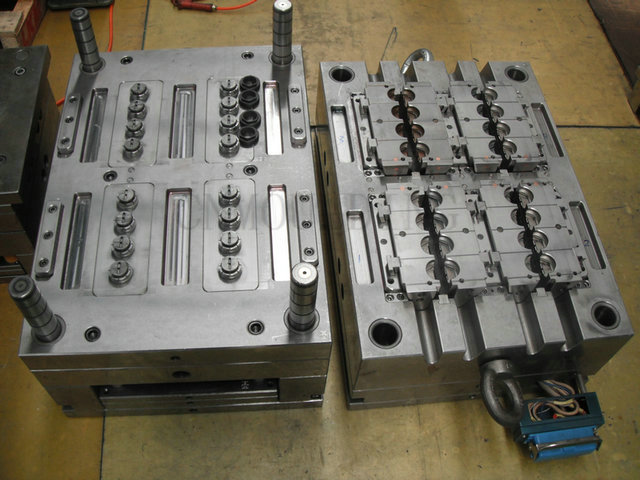
What is the definition of “multi-cavity injection mold”?
Injection molds contain more than one cavity of the same shape. Multiple-cavity injection molds have a symmetrical layout, producing many parts of the same design.
Cavity Construction –Plastic Mold Making In China Design
Basically, plastic mold making in the china cavity will be consist of a cavity main insert, and cavity insert, for this product. We use a cavity main insert shaped like a pin, and to release the air trap. We put a cavity insert pin (pink color) with gas vent land. Gate located at cavity main insert that one position with the parting line China Injection mold making process Cavities: 1, 2,4 to muti cavity up to 120 cavities mold Treatment: Pretreat, Heated to HRC 54, Or nitriding Mold Steel: Cavity, core, and slide; P20.2738.2312,2344, H13 available Standard: YUDO, DEM, HASCO, LKM Design Software: UG, PRO-E, SOLIDWORKS, AUTOCAD
Why custom multi-cavity injection mold fill unevenly
The balanced filling is critical for making china plastic injection molding identical parts, achieving high CPKs, holding tight tolerances, and getting “good” data from the design of experiments.
We know for plastic injection moulding about the importance of uniform filling or balanced flow for each cavity of a multi-cavity mold. The balanced filling is critical for making identical parts, achieving high CPKs, holding tight tolerances, and getting “good” data from the design of experiments (DOEs). Balanced flow is critical for both filling and packing (filling influences packing).
The real problem is determining which one or combination of these is affecting your parts:
1. China injection molds with melted plastic.
Unmelted or partially melted plastic can disrupt the flow in the runner, gate, or part. This may seem like a minor issue, yet my experience tells me it is significant. For example, temperature control of the nozzle tip and body is notoriously problematic, especially with cold runners. Poor screw design may also result in the non-uniform melt. Then there is the temperature control of the manifolds and tips in hot-runner systems. How many of you are getting some “unusual” temperatures to get the hot runner to function?
2. Differential venting among the injection mold cavities or injection mould flow path. Yes, cold runners should be vented. Air-water vapor, off-gases, or volatiles from the polymer can build pressure in cavities and restrict filling. I demonstrate this at every one of my seminars. When troubleshooting venting issues for fill balance, one trick is to make short shots at 90+% full and 65-80% full to see if the balance changes.
3. Non-uniform cooling of the china injection molds, hot-runner system, or hot tips. Plugged or partially
plugged water lines; water lines too close to the parts or too far away; coolant taking the path of least
resistance; laminar flow; air trapped in a coolant channel; or other equipment coming on and offline can
all wreak havoc with proper cooling. While rarely done, a case can be made for regulating water coolant
flow separately through each channel of your molds.
China custom multi-cavity injection mold part design
1, Particularly non-uniform wall thickness. If you have thick and thin sections in the part, the thick section will fill relatively easily compared with the thin section. If gated into the thick section, the flow may “hesitate” at the thick-thin junction, causing a seesaw filling pattern. This factor must be considered in “living hinge” applications.
2, Lack of proper velocity control during filling. Too many profiled velocity changes; running the process pressure-limited, or setting up with different fill times—these are big culprits for filling imbalances. Fill time basically establishes a shear rate, which in turn establishes viscosity. Varying fill time (shear rate) from shot to shot, run to run, or machine to machine provides a “different” process due to huge changes in viscosity. Change the viscosity and you can the change fill pattern.
3. custom multiple-cavity injection mold gate, not all the same size. No problem, as this is difficult to check with a pin
gauge, Relatively few pin gauges measure gate land length. It is difficult and time-consuming to measure land
length, but it’s essential because gate land length establishes a pressure drop. To achieve balanced filling. you
need each gate to provide an identical pressure drop. There is a reason most mold builders have a rule for
maximum land length.
4. Unbalanced flow path. If flow distance and/or path geometry are not identical, the non-uniform filling is inevitable
